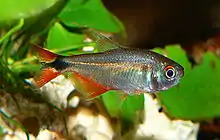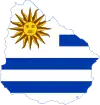Fauna of Uruguay
Overview
It is characteristic of the Uruguayan savanna. Grazing mammals include the Pampas deer (Ozotoceros bezoarticus), the [gray brocket] or Guazuvirá deer (Mazama gouazoubira), and the capybara (Hydrochoerus hydrochaeris), the world's largest living rodent.
Uruguay is home to a rich avifauna, including the Southern lapwing and the magnificent black-necked swan. As a result, birdwatching has become popular in selected locations.
There are several snakes, with four venomous species: the rattlesnake (Crotalus durissus terrificus), coral snake (Micrurus altirostris), yarará (Bothrops pubescens), and crossed pit viper (Bothrops alternatus).
Despite the humid climate of much of the country, the vast majority of Uruguay's land is made up of savannas, so there is not much amphibian diversity. However, the Argentine horned frog, Ceratophrys ornata, thrives in the savannas of central and northwestern Uruguay. Other notable amphibian species of Uruguay include Pseudis minuta, Boana pulchella, Rhinella achavali, and Rhinella diptycha.
Waterlife is also rich, with species such as the tararira (Hoplias malabaricus) or the white-dotted skate.
Extinct species
Extinct fauna includes megafauna, such as Josephoartigasia monesi, Lestobradys, and Glyptodon (some of them coexisted with the arrival of humans, who were responsible for their extinction).
Older extinct species include Neuquensaurus and Meridiosaurus, both from the Cretaceous.
See also
References
- "How to Save the Jaguars? Turn the Locals From Foe to Friend". National Geographic News. June 17, 2017.


_-Argentina-8.jpg.webp)



.jpg.webp)

